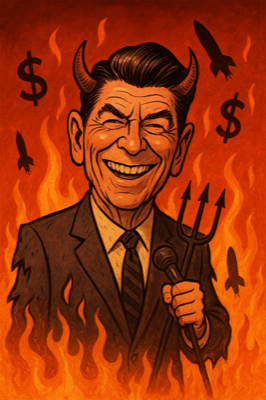Reaganomics: The Beginning of the End
Ronald Reagan's economic policies, collectively known as "Reaganomics," marked the beginning of a systematic attack on the American middle class. His administration implemented policies that would fundamentally reshape the American economy for the worse.
Key Destructive Policies:
- Massive Tax Cuts for the Wealthy: The top marginal tax rate was slashed from 70% to 28%, primarily benefiting the richest Americans
- Deregulation: Systematic removal of regulations that protected workers, consumers, and the environment
- Union Busting: The firing of 11,000 air traffic controllers in 1981 sent a clear message to organized labor
- Corporate Welfare: Billions in subsidies and tax breaks for corporations while cutting social programs


The Destruction of Social Programs
How Reagan's Cuts Devastated America's Most Vulnerable
While Reagan slashed taxes for the wealthy, he simultaneously gutted essential social programs that millions of Americans depended on. His administration's cuts to food stamps, Medicaid, education, and housing assistance disproportionately harmed low-income families, minorities, and children.
Social Program Cuts:
Environmental & Safety Deregulation: